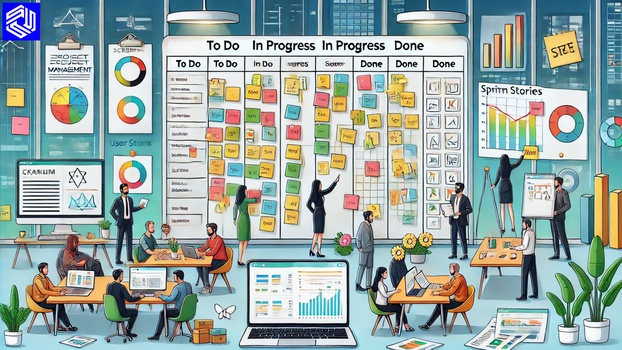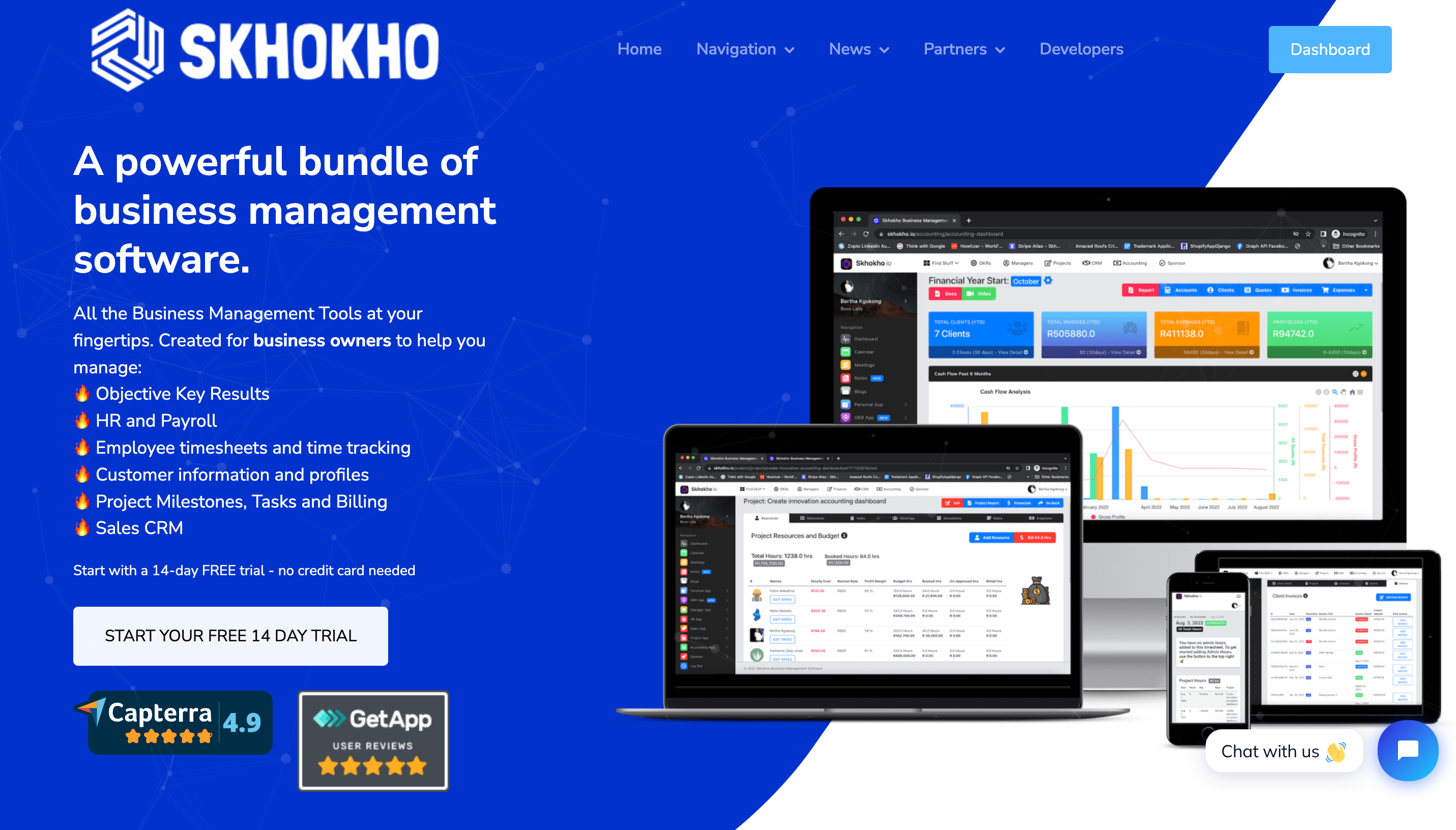How to Stay Agile as a Startup: Tips for Navigating Rapid Change
Adapt or perish: The secret mantra for every startup fighting to survive in today's fast-paced world. Agility isn’t just a buzzword—it’s a necessity. For startups, being agile means the difference between thriving in a competitive market or becoming obsolete. It’s about being quick on your feet, responsive to change, and resilient in the face of challenges.

In this blog, we'll explore the importance of agility for startups and share practical strategies to help your business stay flexible and adaptable. Whether you’re facing shifting market trends, customer demands, or unexpected hurdles, maintaining agility is key to staying ahead. Let’s dive into how you can make agility your startup's greatest strength! We will cover the following:
- What Does Agility Mean for Startups?
- Challenges Startups Face
- Potential Solutions
- Leveraging Technology for Agility: Automating Routine Tasks for Strategic Focus
- Embracing a Lean Startup Approach: Principles of the Lean Startup Methodology
- The Importance of Staying Informed About Industry Trends and Market Shifts
What Does Agility Mean for Startups?
Agility, in the context of a startup, refers to the ability to rapidly respond to changes in the market, customer needs, and internal challenges. It’s about being nimble and adaptable, allowing a business to pivot and adjust strategies without losing momentum or vision. For startups, which often operate with limited resources and under high pressure, agility is crucial for survival and growth.

The Benefits of Being Agile
Being agile offers numerous benefits for startups:
- Quick Adaptation to Market Changes: Startups that embrace agility can quickly adjust their strategies in response to market trends and shifts. This ability to pivot ensures that they remain relevant and competitive, even as the business landscape evolves.
- Improved Customer Satisfaction: Agile startups are more in tune with their customers’ needs and can rapidly implement feedback. By being responsive and adaptable, these businesses are better equipped to deliver products and services that meet or exceed customer expectations, leading to higher satisfaction and loyalty.
- Competitive Advantage: In a crowded market, agility can be a significant differentiator. Startups that can move faster and adapt more effectively than their competitors often have a distinct advantage. They can capitalize on new opportunities, mitigate risks, and innovate faster, positioning themselves as leaders in their industry.
Agility is More Than Just Speed: While speed is an essential aspect of agility, it’s not the only factor. True agility also involves flexibility—the ability to change direction without breaking—and resilience—the capacity to withstand setbacks and bounce back stronger. For startups, being agile means creating an environment where change is embraced, risks are managed intelligently, and learning from failure is part of the journey. It’s about being quick, but also thoughtful and strategic in how those quick decisions are made and executed.
Challenges Startups Face
The landscape of startups is often characterized by a relentless pursuit of innovation and speed, yet the very traits that define agility also bring a set of profound challenges. Startups frequently encounter obstacles such as:
- Limitation of resources: One of the most significant challenges that startups face is the limitation of resources, both financial and human. Without the cushion of established funding or a large team, startups must often do more with less. This scarcity can lead to a laser focus on immediate tasks, which paradoxically may hinder long-term strategic agility. When every resource is stretched thin, experimenting with new ideas or pivoting from a current path can feel like a gamble that many are not willing to take. The desire to optimize the usage of limited resources often conflicts with the need to innovate, creating a dichotomy that can stifle agility.
- Internal resistance to change: This resistance can manifest in a variety of ways, from team members being hesitant to adopt new technologies to leaders struggling with shedding outdated practices. The culture within a startup often evolves from its founders' vision, and when that vision is challenged by the need to adapt, it can create friction. While the necessity for change is often apparent in a dynamic market, the human instinct to cling to the familiar can render the organization less responsive. Navigating these cultural shifts requires strong leadership and a commitment to fostering an environment where change is not only accepted but embraced.
- Maintaining team cohesion: is yet another critical element that startups must manage. A cohesive team can drive agility by making swift decisions and executing changes effectively. However, as startups grow and evolve, diverse perspectives and personalities can lead to conflicts that disrupt this unity. The challenge is to balance individuality and collaboration; too much emphasis on individual performance can fragment the team, whereas a strong emphasis on team cohesion without regard for individual contributions can stifle creativity. Striking this balance is crucial for fostering a truly agile environment.
- Losing focus: Moreover, startups often run the risk of overextending themselves or losing focus. In their eagerness to explore every opportunity, they may spread themselves too thin, diverting resources and attention away from core objectives. This scattershot approach diminishes the effectiveness of their efforts and undermines their strategic goals. It is essential for startups to establish clear priorities and maintain a coherent vision for their trajectory, rather than succumbing to the allure of pursuing every trending market or idea.
Potential Solutions

To address the challenges highlighted in the previous section, organizations must adopt a multifaceted approach that focuses on culture, technology, team structure, and agile frameworks.
- Fostering an Agile Culture: Creating an agile culture begins with leadership commitment throughout the organization. Leaders must model agile behaviors, demonstrating transparency, collaboration, and a willingness to embrace change. This cultural shift can be initiated by encouraging open communication, where team members feel safe to express ideas and concerns without fear of criticism. Regular team-building activities that promote trust and camaraderie can also solidify relationships among members, thus enhancing teamwork. Furthermore, organizations should prioritize training and education on agile principles, ensuring all employees understand the value and methodologies behind agility. Workshops, hackathons, and interactive learning sessions can be effective tools in building this knowledge base, igniting enthusiasm for agile practices, and reinforcing the importance of adaptability.
- Leveraging Technology for Collaboration: Investing in collaborative technology can significantly enhance team performance by providing tools that facilitate real-time communication and project tracking. Platforms like Slack, Microsoft Teams, or Asana enable teams to work together seamlessly, regardless of location. The key is to select technologies that align with the specific needs and workflow of the team. It is essential to periodically evaluate these tools and be responsive to changing requirements, ensuring they continue to serve their purpose.Integrating automated workflows and project management tools can also streamline tasks, reduce bottlenecks, and enhance visibility across teams. However, it’s important to maintain a balance: too many tools can become overwhelming and counterproductive.
- Structuring Teams for Flexibility: To maximize flexibility, organizations should consider creating cross-functional teams that bring together diverse skill sets and perspectives. This diversity enhances creativity and problem-solving capabilities, allowing teams to respond swiftly to emerging challenges. Additionally, establishing a fluid team structure that allows members to move between projects as needed can help to avoid stagnation and foster a culture of continuous learning .While flexibility in team structure promotes adaptability, it also requires a clear definition of roles to prevent ambiguity and confusion.
- Implementing Frameworks Like Agile or Scrum: Adopting agile frameworks such as Scrum provides a structured approach to implementing agile principles. Scrum emphasizes iterative development, where work is broken down into manageable sprints, allowing for frequent reassessment and adaptation based on feedback. This method helps in identifying potential roadblocks early on and provides opportunities for teams to pivot as needed.
- Importance of Continuous Feedback Loops and Adaptability: Establishing continuous feedback loops is vital for sustaining an agile environment. Regular retrospectives after each project or sprint can produce invaluable insights on what worked, what didn’t, and how processes can be improved. By fostering a culture of constructive feedback, organizations can encourage a mindset of continuous improvement that empowers employees to adapt quickly. Adaptability should extend beyond team practices to encompass organizational structures and strategies as well. Regularly revisiting business goals and market demands allows organizations to pivot accordingly, ensuring they remain competitive. This dynamic approach equips businesses with the resilience needed to thrive in an ever-changing landscape.
Leveraging Technology for Agility: Automating Routine Tasks for Strategic Focus
Technology is a game-changer for startups striving to maintain agility. One of the key ways technology contributes to agility is through automation. By using business management software to automate routine tasks—like invoicing, scheduling, and inventory management—startups can significantly reduce the time spent on mundane activities. This automation frees up valuable time for team members to focus on strategic planning and creative problem-solving, driving the business forward.
Agile Project Management Tools

To support agile project management, startups can utilize various tools that foster flexibility and efficiency. Kanban boards are an excellent example; they provide a visual representation of workflow, helping teams track progress and manage tasks in real-time. Agile frameworks such as Scrum or Lean encourage iterative development, continuous feedback, and adaptive planning, all of which are critical for maintaining agility.
Specifically, tools like Skhokho's Project App are tailored for startups looking to stay agile. Skhokho’s software offers a comprehensive suite of features designed to enhance collaboration, streamline processes, and manage projects with ease. From tracking deliverables to managing team workloads, Skhokho ensures that every aspect of project management is covered, allowing startups to respond swiftly to changes and opportunities. Each Project in Skhokho Includes the Following Features:
1. Resources (Budget and Cost Management): Managing resources effectively is crucial for any project, and Skhokho provides robust tools for budget and cost management. You can set a budget, monitor expenses, and make necessary adjustments to stay within financial constraints. This ensures that every project runs efficiently without unexpected cost overruns.
2. Milestones: Milestones are major tasks that represent significant phases or deliverables within a project. Skhokho allows you to break down each milestone into smaller, manageable tasks, making project management more streamlined and organized. While the project is in progress, the project manager can enable milestone booking. This feature allows team members to log the time they spend working on specific milestones when filling out their monthly timesheets, providing a clear record of time allocation and progress.
3. Tasks: Tasks in Skhokho are specific actions associated with a project’s milestones. Each task can be assigned to a team member, ensuring clear accountability. During project meetings, you can review the progress of these tasks, which move through stages such as "To-Do," "In-Progress," and "Done." Skhokho provides a detailed table that displays all tasks and their current statuses, helping teams stay organized and focused on their goals.

4. Meetings for Communication: Effective communication is key to project success, and Skhokho makes it easy to manage meetings. You can create meeting invitations and send them to team members, stakeholders, or other attendees directly through the platform, whether it’s a physical or online meeting. Additionally, you can add minutes and details associated with each meeting, ensuring that all participants are informed and aligned on project objectives.
5. Documents: Skhokho offers a centralized space for all project-related documents, acting as a comprehensive document repository. This fosters transparency and ensures that everyone involved in the project has access to the necessary information and resources, promoting collaboration and reducing misunderstandings.
6. Notes: The Notes feature allows anyone with access to the project to create and share notes related to the project. This feature supports real-time collaboration and knowledge sharing, ensuring that important ideas, updates, and feedback are easily accessible to all team members.
7. Expenses: Tracking expenses is a vital part of project management, and Skhokho makes it easy to record and monitor all project-related expenses. This ensures that the project stays within budget and that all costs are accounted for, contributing to better financial management and accountability.

The Role of Chatbots in Supporting Agility
Chatbots also play a vital role in supporting agility, particularly when it comes to customer engagement and support. By automating responses to common customer inquiries, chatbots ensure that customers receive quick and consistent answers, improving satisfaction and freeing up human agents for more complex issues.
KaraboAI is an excellent example of how advanced chatbot technology can enhance agility. By integrating KaraboAI into a startup’s communication strategy, businesses can deploy bots across multiple channels, automate lead generation, and provide 24/7 customer support—all while gathering valuable data that can be used to refine marketing and sales strategies.
Embracing a Lean Startup Approach: Principles of the Lean Startup Methodology
The lean startup methodology is a strategic approach designed to help startups build sustainable businesses by focusing on validated learning and continuous innovation. At its core, the lean startup approach revolves around three fundamental principles: Build, Measure, Learn.
- Build: This step involves developing a minimum viable product (MVP)—a simplified version of a product that includes just enough features to attract early adopters and gather initial feedback. The goal is to create a prototype quickly and efficiently, minimizing resources and investment.
- Measure: Once the MVP is built, it’s time to test it in the market. This involves collecting data on how customers interact with the product, what features they find valuable, and what improvements they suggest. Objective Key Results(OKRs) are established to measure the success of the product in real-time. Click here to read more about Using OKRs to Drive Your Startup Growth.
- Learn: The final step is to analyze the feedback and data collected during the measurement phase. Startups use this information to make informed decisions about whether to pivot (change direction based on insights) or persevere (continue with the current strategy). This cycle of building, measuring, and learning is repeated, allowing startups to continuously refine their products based on customer feedback and market demands.

Using the Lean Startup Approach to Develop Products Quickly
The lean startup methodology is particularly beneficial for startups because it emphasizes speed and agility. By focusing on building an MVP, startups can quickly bring a product to market without spending excessive time and resources on development. This allows them to test their ideas in the real world, gather valuable customer feedback, and iterate rapidly based on what they learn.
This approach minimizes the risk of investing heavily in a product that may not meet market needs. Instead, it encourages startups to stay flexible, continuously adapting their products to better serve their customers. This constant iteration and improvement process is a key aspect of maintaining agility in a competitive market.
The Importance of Staying Informed About Industry Trends and Market Shifts

Staying informed about industry trends and market shifts is crucial for survival and growth. The ability to anticipate and respond to changes in the market can make the difference between success and failure. Being aware of the latest developments helps startups identify new opportunities, avoid potential pitfalls, and stay ahead of the competition. It also allows them to understand customer needs better and adjust their strategies accordingly, ensuring they remain relevant and valuable to their target audience.
Strategies for Conducting Regular Market Research and Competitor Analysis
To effectively navigate market changes, startups should make market research and competitor analysis a regular part of their strategic planning process. Here are some strategies to consider:
- Continuous Market Monitoring: Keep an eye on industry news, emerging technologies, regulatory changes, and economic indicators that could impact your business. Use tools like Google Alerts, RSS feeds, and industry newsletters to stay up-to-date with the latest information.
- Customer Feedback: Regularly gather feedback from your customers through surveys, interviews, social media, and other channels. Understanding customer preferences, pain points, and expectations can provide valuable insights into market trends and help you adapt your offerings accordingly.
- Competitor Analysis: Monitor your competitors to understand their strengths, weaknesses, strategies, and market positions. Analyze their product offerings, pricing, marketing campaigns, and customer feedback. This information can help you identify gaps in the market and opportunities for differentiation.
- Attend Industry Events: Participate in industry conferences, webinars, and networking events to learn from thought leaders, exchange ideas, and gain insights into market trends. These events can also provide valuable opportunities to connect with potential partners, customers, and investors.
- Use Data Analytics: Leverage data analytics tools to track key performance indicators (KPIs) and monitor changes in market demand, customer behavior, and sales trends. Analyzing this data can help you identify patterns and make informed decisions about where to focus your efforts.
Final Thoughts
Agility is not just a buzzword; it’s a vital component of startup success. In today’s rapidly changing business environment, the ability to adapt, pivot, and respond quickly to new information and market conditions is what separates thriving startups from those that fall behind. By embracing intentional strategies such as leveraging technology, implementing the lean startup approach, and engaging in continuous planning and iteration, startups can cultivate agility and position themselves for sustainable growth.

Ready to take your startup’s agility to the next level? Explore how tools like Skhokho Business Management Software can help you manage growth more efficiently and stay ahead of the competition. With features designed to streamline processes, improve collaboration, and provide real-time insights, Skhokho offers everything you need to maintain agility and drive success. Start your journey towards a more agile and resilient startup today!









